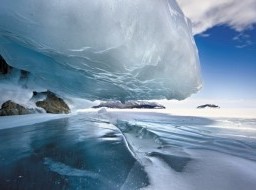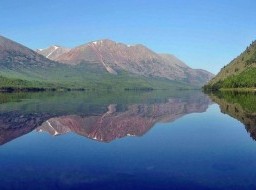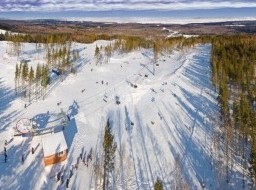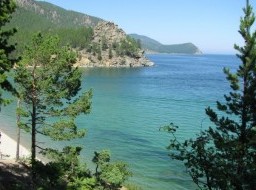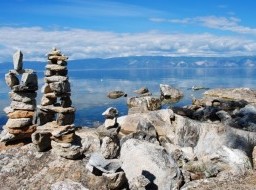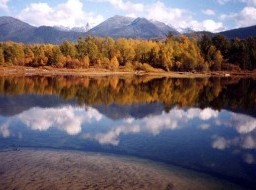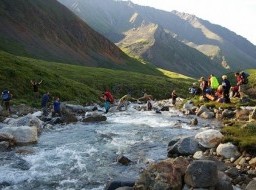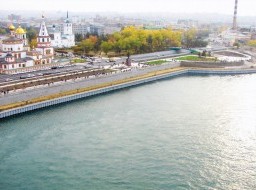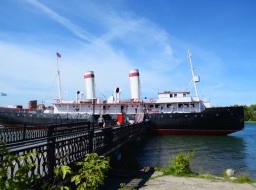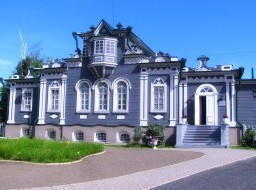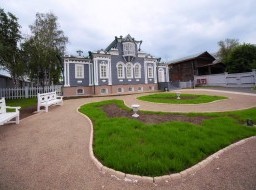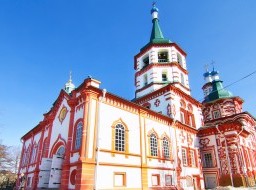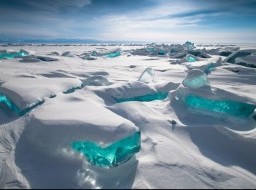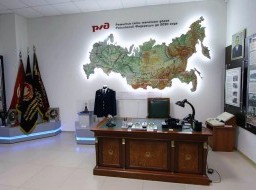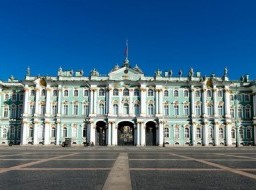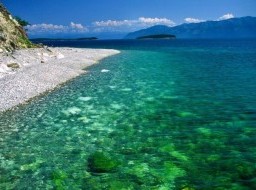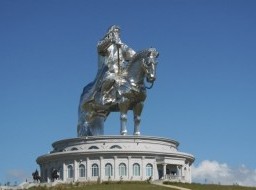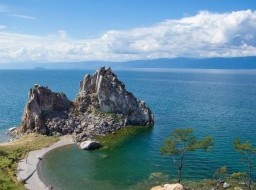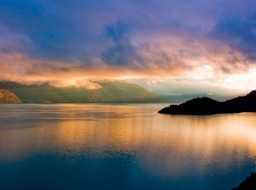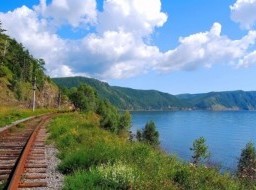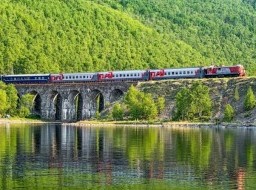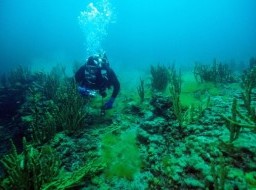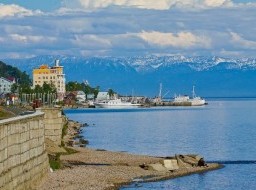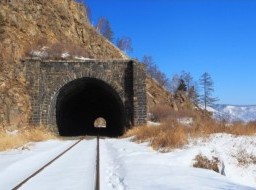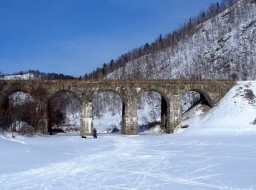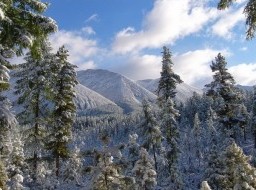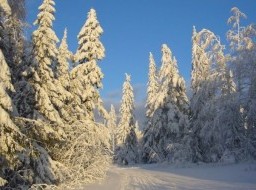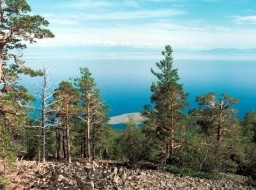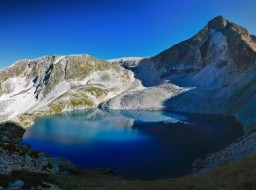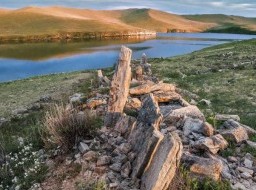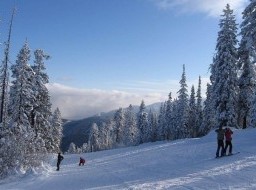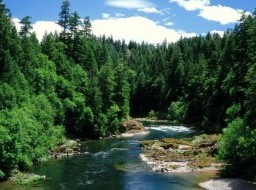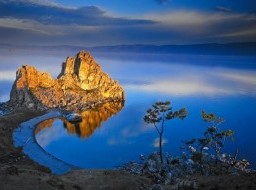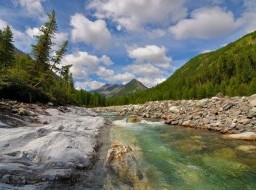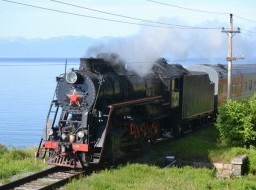Circumbaikal Railway
In truth the Circum-Baikal Railroad is an amazing creature of the human's labour and thought, worthy of your attention. The section of the Trans – Siberian Railroad on the southern shore of fabulous Baikal from Port Baikal to Kultuk is called the Circum-Baikal Railway and was built more than 100 years ago. There are a lot of beautifully constructed tunnels and amazing bridges along the way, making the Circum-Baikal a fantastic monument in itself. Trans-Sib is one of the most outstanding technical and engineering constructions and its incredible building has become an event of the world's significance. Only this railway bed was made out on the vertical slopes of clifs going down to the depth of the "Sacred Sea". Circum-Baikal Railroad is one of the major man-made attractions on Lake Baikal, a unique monument of engineering. After America's explorations and the Suez Canal's building there was no such an event in the world's history, mentioned as much more prominent and rich of the direct and circumstantial after-effects then the building of Trans-Sib. The Great Siberian Way, 7.500 km. of extent, has connected the European and Asian parts of Russia with "steel belt" and the Circum-Baikal section (260 km) has become its "golden buckle. The train travels at a leisurely pace right along the shore of the lake. You're bound to be impressed by the stunning views of Lake Baikal, its magnificent beauty and the surrounding hills. Numerous tunnels, stone galleries, bridges and viaducts will strike your imagination. The personal courage and the unique skills of the engineers and workers will amaze you; at the end of XIX century, the majority of the construction was carried out by hand and in severe weather conditions, both hot summers and extremely cold winters. The rocks and mountains made the engineers lay the greater part of the railway on artificial structures in tunnels, strengthening the sides of the lake shore, and directing the small rivers that flow into the lake through special stone viaducts. In 1982 the Circum-Baikal Railway was declared an architectural and scenic reserve (it is now part of the Baikal National Park). In the period of 1902-1904, there were: 39 tunnels, 47 stone galleries, 1ots of metal bridges, stone viaducts, support-walls, water-defenses, railroad stations and other constructions, built in the western part of the Circum-Baikal loop (84 km of extent). Some of those permanent headworks mentioned above, have their own names like: "Listvenychny", "Tolsty", "Khatorzhansky", "Berezovsky", "Polovinny", "Dvoynaja Gooba" ets. The Circum-Baikal section from Port Baikal station to Khultouck station has no comparisson to the volume of the fulfilled works and the quantity of engineering constructions ever built on 1 km of the road in Russia or even in Europe. And Trans-Sib's building has also been one of the first experiences of the international cooperation when the foreign workers from China and Albany or Italian engineers worked together with Russians. In the last 30 years, there was a reconstruction of the Railway, engineering structures were fortified, a new path was built. The complex terrain of rocky shore has forced builders to lay the biggest part of the road in tunnels or in artificial fields that were cut in the rock. It took a wagon of explosives for every kilometer of the road. A lot of legends and superstitions are connected with many parts of Circum-Baikal Railroad. According to the legend, in 1920 there was a crash of a train with "Kolchak's gold", which sank to the bottom of the lake in a depth of 1.3 kilometers (0,8 miles). "Kolchak's gold" was a part of the gold reserve of the Russian Empire, which was taken from Petrograd during the Revolution in 1918. After that, according to the legend, the locals were finding bars of gold in shallow waters. Nowadays, its current location is getting more and more interesting for historians, tourists and for those who are in love for exotic natural spots. Till now the researchers, amateurs of the olden times and tourists cannot stop to be amazed by its mountainous defensive system: trestle bridges, stone walls and galleries, which absorbed the basic firmness and extraordinary elegance. The creative strength and inspiration of the builders have been realized not only in the main constructions but in the others: the concrete drainages, gutters and dry masonry. Every little creak or even spring, falling into Baikal near the line, were ennobled around because the builders had every thing taken into consideration: the most complex relief of shores, conditions of mountain rocks and depth of water. You can enjoy the amazing views of Lake Baikal, unique engineering constructions, including tunnels. In the villages along the Circum-Baikal Railway remained a number of wooden buildings of the early XX century, built in art Nouveau style. |
|
